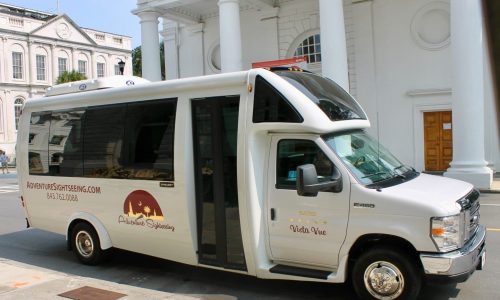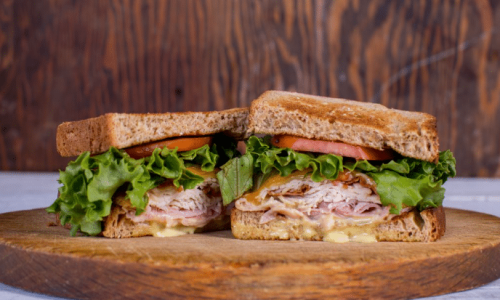Few U.S. cities have the kind of history that Charleston does. Her past encompasses 300 years worth of stories with a cast of characters that includes Indians, English settlers, politicians, armies and slaves. The settings range from a thriving seaport to spacious plantations to a downtown at times bustling with business while also recovering from devastating earthquakes and hurricanes. Yet Charleston has risen up from any obstacle.
Today, the city is revered as one of the best in the world with visitors from all over flocking to this coastal town to soak up the history and European influence. Whether you’re a die-hard history buff or just want to learn more about Charleston’s roots, these are some must-see places to visit.
Fort Sumter National Monument
Not many cities can lay claim to being the site of a major war, but here in Charleston, the Civil War erupted on April 12, 1861, when Confederate troops opened fire on Fort Sumter in the Charleston Harbor. Fort Sumter surrendered 34 hours later. Union forces would spend four years trying to take it back. Fort Sumter Tours provides the ferry service to and from the national monument. The 30-minute cruise to Fort Sumter includes a narrated tour of historic points of interest and facts about the War Between the States. Visitors spend an hour at the fort before returning to Charleston.
The Fort Sumter museum exhibits tell the story of the construction of the fort and island, the events leading to the April 1861 battle, and the subsequent bombardment and reduction of Fort Sumter by artillery later in the war.
What the locals know: The first Union shot of the Civil War was fired by Capt. Abner Doubleday. He was the second senior officer at Fort Sumter, under Maj. Robert Anderson.
Tours depart from the Aquarium Wharf downtown and also from Patriots Point in Mount Pleasant. Call 843-722-2628 for info.
The Old Exchange & Provost Dungeon
Situated at the foot of Broad Street at the intersection of East Bay Street, the Old Exchange represents Charleston’s early heyday as a thriving port city – a reputation it maintains today. Construction on the building began in 1768 and it was designed in a symmetrical Palladian architectural style. The Old Exchange building housed the Charleston Post Office from 1815 to 1896 with brief interruptions because of the Civil War and the 1886 earthquake. In 1913, Congress passed the building to the Order of Daughters of the American Revolution for preservation of the building and its history.
In 1976, the building’s administrative care was assigned to the newly formed Old Exchange Commission and, shortly thereafter, renovations on the historic structure began. It opened as the Old Exchange & Provost Dungeon in 1981. Today, docents lead visitors on tours, sharing the tales of pirates and patriots during the Colonial and Revolutionary eras. The Provost Dungeon is particularly spooky. Nighttime tours are available through Bulldog Tours, part of its Ghost & Dungeon Walking Tour. East Bay & Broad Streets, 843-727-2165
What the locals know: President George Washington spent a week in May 1791 in Charleston. From the west elevation of the Old Exchange he addressed the citizens of Charleston upon his arrival. The building also hosted four lavish events for the president, including a ball and concert.
PLANTATION LIFE
One of the best ways to understand how the people of Charleston lived in the 18th and 19th centuries is with a visit to one of the area plantations. They each provide a unique look at the houses, gardens and agriculture of the time. Deemed America’s oldest landscaped gardens, Middleton Place has 65 acres of centuries-old camellias, azaleas, roses and more. Built in 1755, the Middleton family home showcases furniture, silver, porcelain, rare books and portraits. 4300 Ashley River Road, 843-556-6020.
Magnolia Plantation & Gardens offers tours of the Drayton family home with 10 rooms open to the public and furnished with early American antiques, porcelain, quilts and other Drayton family heirlooms. In recent years, Magnolia Plantation has been working to preserve five 1850 historic structures that were former slave dwellings. They now serve as the focal point for an award-winning 45-minute program in African-American history. Don’t miss the gardens – parts of which are more than 325 years old. 3550 Ashley River Road, 843-571-1266
Drayton Hall is a National Historic Landmark and a property of the National Trust for Historic Preservation. The 1738 historic plantation house stands on a 630-acre site and is one of the finest examples of Georgian-Palladian architecture in America. After seven generations, the Revolutionary and Civil Wars, and numerous hurricanes and earthquakes, the main house remains in nearly original condition. 3380 Ashley River Road, 843-769-2600.
Boone Hall Plantation in Mount Pleasant offers several tours on black history in America, Gullah culture and slave history. Open to the public since 1956, Boone Hall is also one of America’s oldest working, living plantations. They continue to grow crops on the land and items are sold in the Boone Hall Farms market and during U-pick seasons. 1235 Long Point Road, Mount Pleasant, 843-884-4371
What the locals know: Middleton, Magnolia and Drayton are all located on the scenic Ashley River Road so pack a lunch and make a day of plantation tours.
The Charleston Museum
The Charleston Museum not only recounts historic periods in Charleston’s history but the museum itself has a place in American history. Established in 1773, by the Charleston Library Society, the museum is regarded as “America’s First Museum.” Many of the original collections were destroyed by fire in 1778, and operations were suspended during the American Revolution; however, collecting resumed in the 1790s. Today, The Charleston Museum houses the oldest and most comprehensive collection of South Carolina materials.
Current exhibits highlight uniforms of yesteryear, shoes from the 18th, 19th and 20th centuries, early 20th- century quilts and “Brethren,” an original exhibition examining artifacts associated with militia units that served in and around Charleston during the Civil War. 360 Meeting St., 843-722-2996.
What the locals know: The Charleston Museum offers a number of classes and programs for both children and adults. Watch for the sweetgrass basket making class and try your hand at this uniquely local art form.
HISTORIC HOMES
Charleston is home to countless historic homes and a few are open to the public for tours, giving visitors a peek into the lifestyle of Charleston’s elite families.
The Edmondston-Alston House, built in 1825, sits on East Battery Street with a view of the Charleston Harbor. From its piazza, Gen. P. T. Beauregard watched the bombardment of Fort Sumter and the start of the Civil War. A guided tour of the home’s public rooms and piazzas highlight its Federal and Greek revival design and the vast collection of family silver, decorative arts, furniture and even an original print of the Ordinance of Secession. 21 E. Battery, 843-556-6020.
The Calhoun Mansion is indeed a mansion. At 24,000 square feet, it’s the largest residence in Charleston. The mansion has 35 rooms, a grand ballroom, Japanese water gardens, 35 fireplaces, a 75-foot domed stairhall ceiling, khoi ponds, a private elevator, three levels of piazzas, ornate chandeliers and a 90-foot cupola. A baronial Italianate manor house built in 1876 on Meeting Street, the Calhoun Mansion is regarded as one of the greatest post-Civil War houses on the East Coast. 16 Meeting St., 843-722-8205.
Charleston merchant Nathaniel Russell built a grand Federal townhouse on Meeting Street in 1808. Set amid spacious formal gardens, the Nathaniel Russell House is a National Historic Landmark and is widely recognized as one of America’s most important neoclassical dwellings. This year, the Historic Charleston Foundation completed renovations at the house to better preserve the free-flying staircase and enhance the visitor experience with an elevator, ground-floor restrooms and an expanded gift shop. 51 Meeting St.,843-724-8481.
The Aiken-Rhett House on Elizabeth Street was built for Charleston merchant John Robinson in 1820. He lived there for eight years but was forced to sell the house after losing five ships at sea. William Aiken Sr. acquired the house in 1827 and his descendants continued to live there for many generations. William Aiken Jr. became governor of South Carolina, a member of the U. S. House of Representatives, and one of the state’s largest slaveholders. 48 Elizabeth St., 843-723-1159.
What the locals know: Gen. Robert E. Lee stayed at the Edmondston-Alston House on Dec. 11, 1861, when a widespreading fire threatened his safety in a Charleston hotel





















